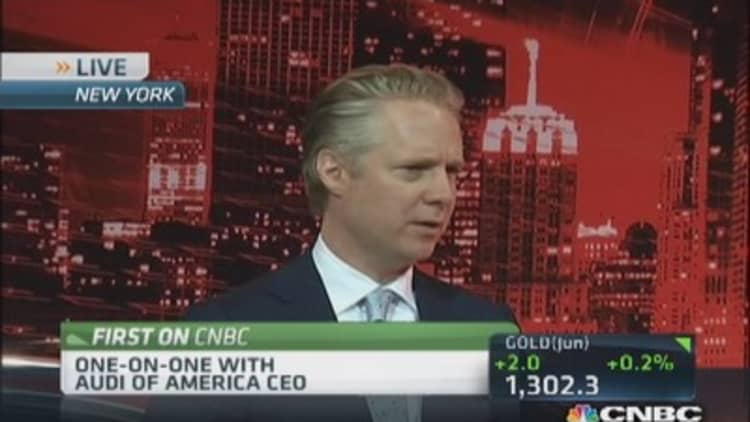Despite a renewed interest in full-size pickups, SUVs and muscle cars, American car buyers are getting better fuel economy than ever before.
According to a new study by the Consumer Federation of America, released Tuesday, more than half of 2014 model year vehicles get more than 23 miles per gallon, with 1 in 9 topping 30 miles per gallon.
Even some traditional gas guzzlers are now yielding mileage once considered a stretch for small cars, though automakers have a way to go before achieving the 54.5 mile per gallon target facing them in 2025, observers warn.
Read MoreElectric or hybrid? These car's drivers are wealthier
"This has been remarkable," said Mark Cooper, research director for the consumer advocacy group, which has been tracking fuel economy trends for more than a decade.
After years of relatively stagnant mileage, the increased federal fuel economy rules passed in 2005 have been paying off, Cooper said.

CFA's annual study found the percentage of vehicles getting at least 23 miles per gallon hit a record 50.5 percent for the 2014 model year, compared with just 19 percent in 2009. What's more, 11.6 percent now top 30 mpg, a tenfold increase in just five years. For the first time, there's no single model rated at less than 13 miles per gallon.
More from The Detroit Bureau:
Auto sales are rapidly heating up
This car can clean itself
Motorists OK with insurance companies spying
But the auto industry is under intense pressure to move even more quickly, with a federal 54.5 mile per gallon Corporate Average Fuel Economy standard set to take effect by 2025.
Because of quirks in the regulations, manufacturers will be able to miss those numbers by about 10 percent, but will still be stretching to get there. Observers expect to see increased use of alternative fuels and propulsion systems, including battery power, hydrogen fuel-cells and diesels, as well as advanced gas engines, more efficient transmissions, improved aerodynamics and downsizing.
—By CNBC Contributor Paul A. Eisenstein.

